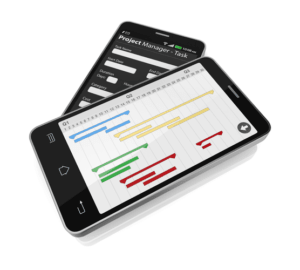
This proactive approach allows resources to be managed more effectively and avoids the cash being spent before it is needed. Once the encumbrance is approved, the funds are no longer available for use in other transactions. In this document, the IT department can list the equipment they want to purchase and the vendor they intend to use. If management approves, the IT department writes the purchase order, which creates the encumbrance. Paying the expense after the money has been encumbered doesn’t affect the amount of the appropriations.
- When an organization creates a new purchase order or adds a new line item to an existing purchase order, the new items are encumbered to the journal.
- Encumbrance accounting, therefore, ensures that a business does not overspend its budget.
- The creditor can then sell the property to recoup at least a portion of their loan.
- Encumbrance data enables budgetary control, letting your company better understand where they are financially at any given time.
- This helps you accurately report financial data at the end of the year by verifying them and adjusting encumbrances against POs or other documents.
How to Record Encumbrances

Monitoring and analyzing encumbrances provide valuable insights into budgetary control and allow for informed financial planning and decision-making. By regularly reviewing encumbrance balances and activity, organizations can ensure that their expenditures align with the allocated budget and avoid overspending. https://www.bookstime.com/ is utilized differently in government, public sector, and non-profit organizations, with unique requirements and regulations to ensure transparent financial management. In the government sector, encumbrance accounting is crucial for budget control and compliance with legal and regulatory frameworks.
What If I Buy Real Estate With an Encumbrance?
In accounting, an encumbrance is an open commitment to pay for goods or services ahead of the actual purchase. In other words, the purchasing company makes a promise to pay before the expense is incurred. Encumbrances are also known as pre-expenditures since they act as budgeted reserve funds before the actual expenditure. Next, organizations need to choose the appropriate encumbrance accounting system.

Step 1 – Budget Allocation
By creating encumbrance journal entries after purchase requisitions and purchase orders, companies can track their encumbrances and monitor budget utilization more efficiently. encumbrance accounting plays a vital role in financial management, ensuring accurate reporting and effective budgetary control. By tracking future payments and expenses, it provides a detailed view of cash flow, allowing companies to make informed financial decisions. It serves as a mechanism to reserve funds for future liabilities, enabling better expenditure control and fraud prevention.
An affirmative easement allows the party that possesses the easement to use a property as defined by the easement. For example, a utility company may have the right to run a gas line through a person’s property. Or pedestrians might have the right to use a footpath passing through that property. A business or government can encumber funds in several ways and for several reasons.
Manual encumbrance lines are made on the general ledger, most commonly after a purchase requisition process. Once a purchase order (PO) goes through the approval process, the encumbrance transaction then shows the money appropriations for that purchase. Any unpaid encumbrances at the end of the year processing, such as outstanding purchase orders, are examined and may carry to the first period of the following year. The purchasing company spends the encumbered amounts after confirming vendor invoices referring to the purchase order. This results in a credit of the invoice amount to the encumbrance account, reducing its balance. To illustrate how the complete encumbrance accounting process works, let’s take a typical example of an encumbrance transaction — a purchase order.
This type of accounting also helps detect fraud, prevent rampant spending, and increases budget control. The accounting term encumbrance can sometimes be mistaken for real estate encumbrance. While encumbrance accounting provides significant benefits, certain challenges and considerations must be carefully navigated, particularly in the government, public sector, and non-profit realm. These sectors have unique characteristics that can impact the implementation and effectiveness of encumbrance accounting systems. One popular software option is the XYZ Encumbrance Accounting Software, which allows users to create and track encumbrances effortlessly. It provides a user-friendly interface that simplifies the process of entering and managing encumbrance data.
Q: What challenges can organizations face when implementing encumbrance accounting?

To ensure a smooth implementation, organizations should establish clear policies and procedures for encumbrance accounting. This includes defining roles and responsibilities, establishing approval processes for purchase requisitions and purchase orders, and implementing regular audits to ensure compliance and accuracy. One effective way to monitor encumbrances is through the use of encumbrance reports. These reports provide a comprehensive overview of the encumbered amount, remaining balance, and any changes made to the encumbrance. They serve as a valuable tool for tracking the status of commitments and ensuring that funds are appropriately allocated. Another notable software solution is the ABC Encumbrance Tracker, which offers advanced features for encumbrance management.